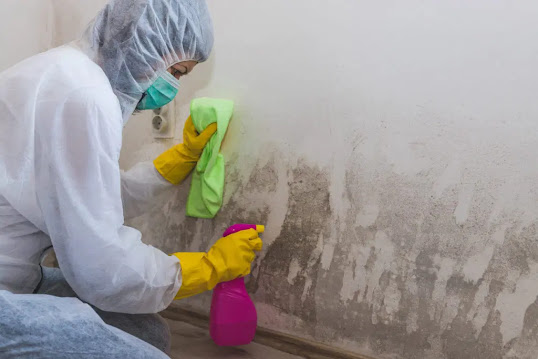How Can You Effectively Remove Mould Stains from Surfaces?
Mould stains can be a major nuisance, making surfaces look unsightly and even causing potential health risks. Whether it’s on walls, ceilings, tiles, or fabric, proper mould stain removal is essential to maintain a clean and healthy environment. Understanding the right techniques and preventive measures can help you get rid of these stubborn stains effectively.
Understanding Mould Stains
Mould thrives in damp, humid conditions, and once it settles on a surface, it can leave behind dark, unsightly stains. If left untreated, these stains can spread and become more difficult to remove. Regular mould stain removal is key to preventing long-term damage to surfaces and reducing the risk of respiratory issues caused by mould spores.
Effective Methods for Mould Stain Removal
1. Using Household Cleaners
A simple mixture of white vinegar and water is one of the most effective solutions for mould stain removal. Spray the affected area, let it sit for about an hour, and then scrub with a brush or sponge. Baking soda mixed with water is another natural option that works well for removing mould stains on various surfaces.
2. Bleach Solution for Tough Stains
For stubborn stains, a diluted bleach solution can be highly effective. Mix one part bleach with three parts water, apply it to the mould-stained surface, and let it sit for 15-20 minutes. Scrub thoroughly and rinse with clean water. However, be sure to wear protective gloves and ensure good ventilation when using bleach for mould stain removal.
3. Commercial Mould Removers
There are several mould stain removers available in the market that contain powerful antifungal agents. These products are designed to penetrate deep into surfaces and eliminate mould at its source. When using a commercial mould stain removal product, always follow the instructions carefully to achieve the best results.
4. Removing Mould Stains from Fabric
Mould can also develop on clothing, upholstery, and curtains. To tackle Mould Stain Removal on fabric, soak the affected material in a mixture of water and white vinegar or hydrogen peroxide. Washing with hot water and detergent can further help eliminate any remaining spores. For delicate fabrics, professional cleaning may be the best option.
Preventing Future Mould Growth
Once you’ve successfully completed mould stain removal, taking preventive measures can help keep mould from returning.
- Control humidity levels: Use a dehumidifier or air conditioner to maintain indoor humidity below 50%.
- Improve ventilation: Keep windows open and use exhaust fans in bathrooms and kitchens.
- Fix leaks promptly: Address any plumbing issues or roof leaks to prevent moisture buildup.
- Use mould-resistant products: Consider using mould-resistant paint and materials, especially in high-moisture areas.
Conclusion
Proper mould stain removal is essential to maintaining a clean and hygienic space. Whether using natural remedies, bleach, or commercial cleaners, tackling mould stains early will prevent them from spreading and causing further damage. By adopting preventive measures, you can ensure your home remains mould-free and safe for your family.




Comments
Post a Comment